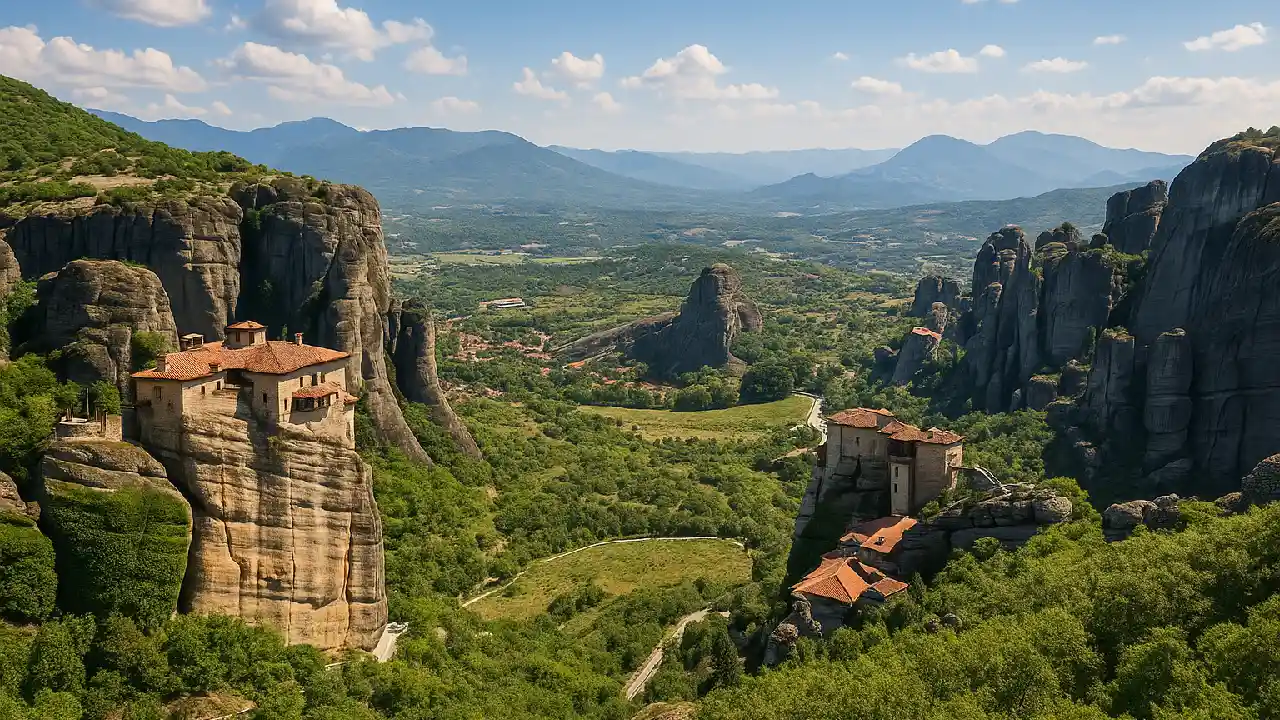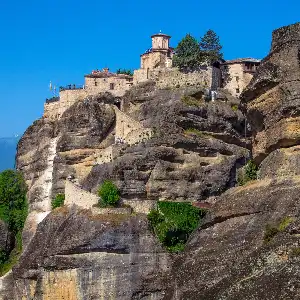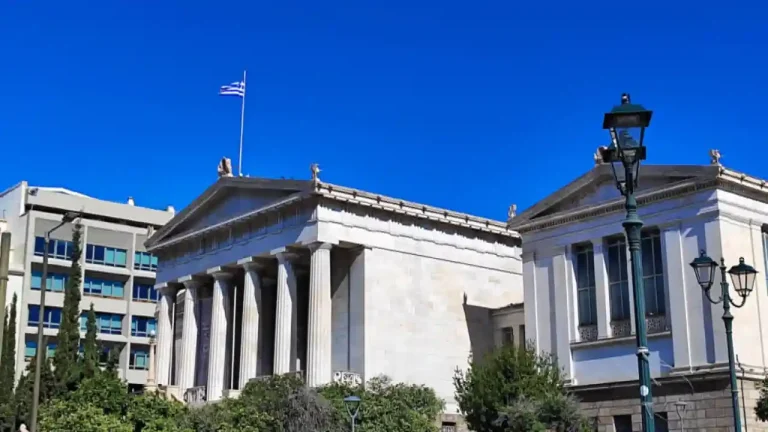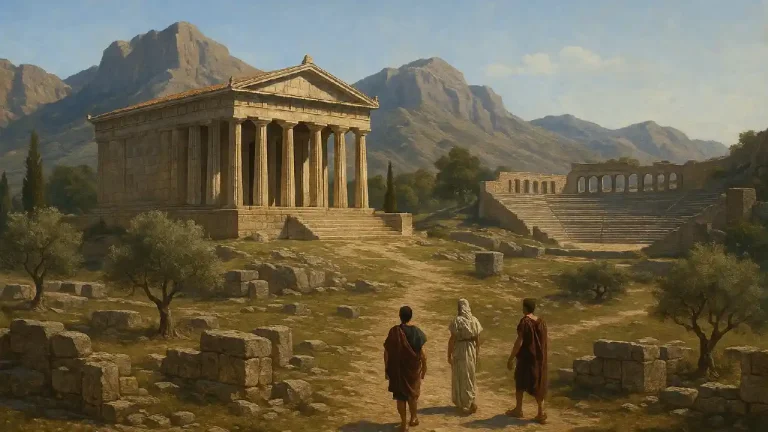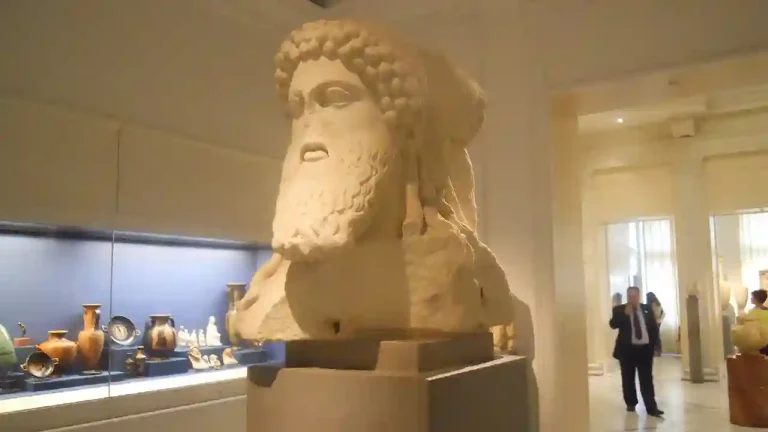Athens to Meteora Travel Guide
Introduction to Meteora
When it comes to awe-inspiring landscapes steeped in history, Meteora stands tall—quite literally. Rising like stone sentinels from the plains of Thessaly in central Greece, these monumental rock pillars are crowned by ancient monasteries that appear to float in the sky. Meteora, whose name fittingly translates to “suspended in the air,” offers a surreal blend of natural wonder and spiritual tranquility. Recognized as a UNESCO World Heritage Site, this destination is not just a marvel for the eyes but also a profound cultural and religious journey.
Situated near the town of Kalabaka, Meteora is easily accessible from Athens, yet it feels worlds away from the bustling capital. Whether you’re drawn by its serene monasteries, thrilling hiking trails, or jaw-dropping photo opportunities, the journey from Athens to Meteora is as rewarding as the destination itself.
What Makes Meteora Unique?
At first glance, Meteora looks like the set of a fantasy film—impossibly tall cliffs, carved by millennia of wind and water, standing guard over the quiet plains. But it’s not just nature that makes Meteora unique. The site is also home to six active Eastern Orthodox monasteries that cling to the cliff edges, each a testament to human perseverance, faith, and ingenuity. These monasteries date back to the 14th century, when monks sought refuge from political turmoil and built their sanctuaries in the most inaccessible places imaginable.
What’s truly remarkable is how these structures were constructed. Before roads or cable systems existed, materials were hoisted up using ropes, baskets, and pulleys—a feat that seems as miraculous as the serene silence that envelops the area.
Meteora also offers a spiritual and contemplative atmosphere, even for those who are not religious. Visitors often speak of a quiet reverence that fills the air—a harmony between nature, architecture, and inner peace that’s difficult to put into words. It’s a place where time seems to stand still, where every gust of wind whispers secrets from the past.
History and Cultural Significance
Meteora’s history is interwoven with both religious devotion and the strategic necessity of isolation. The first hermits arrived here as early as the 9th century, living in caves and crevices in the towering rocks. By the 14th century, political instability in the Byzantine Empire prompted a surge in monastic life. Monks sought not only solitude but also safety, and Meteora’s sky-high cliffs offered both.
At its peak, there were 24 monasteries, each built with painstaking effort and deep spiritual dedication. Today, only six remain active, still inhabited by monks and nuns who maintain centuries-old traditions. These monasteries house priceless religious artifacts, ancient manuscripts, and exquisite frescoes, offering a glimpse into Orthodox Christianity’s profound artistic and spiritual heritage.
From a cultural perspective, Meteora represents a unique convergence of human and natural achievement. It is not only a pilgrimage site but also a symbol of Greek resilience and creativity. For centuries, the monasteries were inaccessible to all but the most determined pilgrims. Today, while modern roads and steps provide easier access, the sense of sacredness remains untouched.
Why You Should Include Meteora in Your Greece Itinerary
While Santorini and Athens often steal the spotlight, Meteora offers a vastly different experience—one that’s equally captivating but far less crowded. If you seek a quieter, more meaningful connection with Greece, Meteora delivers on all fronts. The journey there is part of the charm, revealing Greece’s changing landscapes and rural life. Whether you take the train, bus, or rent a car, the path to Meteora introduces you to villages, vineyards, and mountain vistas rarely seen by tourists.
Meteora is also a photographer’s paradise. From sunrise to sunset, the interplay of light and shadow on the rocks creates a constantly changing canvas. Add the ancient monasteries perched atop cliffs, and you have a scene that’s both haunting and heavenly.
Finally, Meteora offers versatility. Want adventure? Hike its trails. Seeking solitude? Sit quietly in a monastery courtyard. Traveling with kids? Let them marvel at the cliffs and birds of prey circling above. Planning a romantic escape? Watch the sun dip below the rocks with your partner by your side.
Next Up: Traveling from Athens to Meteora
In the next section, we’ll explore all the practical ways you can get from the bustling heart of Athens to the tranquil heights of Meteora. Whether you’re after the comfort of a scenic train ride, the freedom of a self-driven road trip, or the efficiency of a guided tour, we’ve got every route and tip covered.
Traveling from Athens to Meteora
Once you’ve decided to witness the awe-inspiring splendor of Meteora, the next question becomes: how do you get there from Athens? The good news is that you have several reliable and scenic options. The journey itself, whether by train, bus, car, or private tour, is part of the overall Meteora experience, revealing rural Greece in its untouched glory. Let’s explore your travel options one by one and help you choose the best fit based on your time, budget, and travel preferences.
Overview of Travel Options
Traveling from Athens to Meteora is both straightforward and flexible. Here’s a quick summary of the main options available:
| Mode of Transport | Travel Time | Cost (Approx.) | Pros | Cons |
|---|---|---|---|---|
| Train | 4 to 5 hours | €25–€35 | Scenic, comfortable, direct option | Limited train times; requires early booking |
| Car | 4.5 to 5 hours | Varies (fuel + rental) | Maximum flexibility, picturesque route | Requires driving confidence on rural roads |
| Bus | 5 to 6 hours | €30–€40 | Budget-friendly, widely available | Transfer in Trikala or Kalabaka may be needed |
| Private Tour | Full day (12+ hrs) | €100+ | All-inclusive, guided, stress-free | Less freedom, more expensive |
| Day Tour Package | 12–14 hours | €90–€150 | Transport, guide, monastery fees included | Rushed pace, limited personal exploration |
Each option has its perks and limitations, depending on your comfort level, schedule, and travel style. Let’s dig deeper into each mode of transport so you can decide what’s best for your trip.
Travel Distance and Time
Meteora is approximately 355 kilometers (220 miles) northwest of Athens. Despite the moderate distance, Greek roads—especially as you approach mountainous regions—can be winding and slower to navigate. This is one reason why many travelers opt for the train or a guided tour, which offers a stress-free route while you sit back and enjoy the changing landscape.
On average:
- Train: ~4.5 hours (direct routes available daily)
- Driving: ~4.5–5 hours depending on traffic and stops
- Bus: ~6 hours with transfers
- Day Tour: ~13–14 hours round-trip
Planning your journey early is advisable, particularly during peak seasons (spring, summer, and holidays), as trains and buses may fill up quickly and tour slots can sell out.
Why the Journey is Worth It
Though Meteora can seem like a long way from Athens, this journey is a rewarding one. As you leave the city’s urban sprawl, you’ll traverse wide valleys, olive groves, cypress forests, and quaint Greek villages that offer a glimpse into the country’s authentic rural life.
For photographers and nature lovers, each leg of the trip introduces unique vistas. If you opt for the train or car, keep your camera handy—you’ll pass river crossings, mountain tunnels, and fields of sunflowers and vineyards that look like oil paintings brought to life.
Moreover, the journey acts as a transition—from the historic chaos of Athens to the meditative silence of Meteora. It’s as though the travel time prepares your mind and body to fully embrace the calm and otherworldly ambiance that awaits you.
Tips for a Smooth Journey
Here are some tips to help you travel from Athens to Meteora without a hitch:
- Book train tickets online: Especially during the tourist season. Choose a seat by the window if possible.
- Leave early: Whether you’re driving, taking a train, or hopping on a tour bus, starting early gives you more time to explore.
- Pack light but smart: Especially if you’re doing a day trip. Comfortable shoes, a water bottle, a scarf for monastery visits, and your camera are must-haves.
- Double-check schedules: Greek public transport sometimes has limited or adjusted services on weekends and public holidays.
- Stay overnight: If you can spare the time, staying in Kalabaka or Kastraki will allow you to explore Meteora at sunrise or sunset—an unmissable experience.
Coming Up Next: Train from Athens to Meteora
In the next section, we’ll zoom in on the most popular travel choice—taking the train. Affordable, scenic, and relatively fast, it’s a favorite among solo travelers and small groups alike. We’ll break down how to book your ticket, what to expect during the ride, and how to make the most of your time aboard.
Train from Athens to Meteora
For many travelers, taking the train from Athens to Meteora is more than just a method of transportation—it’s the start of an unforgettable journey. The train ride winds through Greece’s changing topography, offering a cinematic transition from the urban heartbeat of Athens to the tranquil majesty of Meteora. It’s not just efficient and affordable; it’s a comfortable, scenic adventure that sets the tone for what lies ahead.
Train Timetable and Booking Tips
The main train station in Athens is Larissa Station, located near the city center and easily accessible by metro, taxi, or bus. The destination station for Meteora-bound travelers is Kalabaka (ΚΑΛΑΜΠΑΚΑ)—the closest town to the monasteries of Meteora.
Here’s what you need to know:
- Direct trains: These run twice daily (usually in the early morning and afternoon). The journey takes approximately 4 hours and 20 minutes.
- One transfer trains: Some routes require a transfer at Paleofarsalos. This adds about 30–45 minutes to the trip but is still very manageable.
- Booking: Reserve your seats in advance via the official Hellenic Train website (hellenictrain.gr) or at Larissa Station. Online booking lets you select seats, view schedules, and print or download e-tickets.
- Cost: Tickets range from €25 to €35 for standard class, with discounts for seniors, students, and children. First-class upgrades are available for an extra €5–€10, offering more legroom and quieter cabins.
Train Schedule Snapshot (subject to seasonal changes):
| Departure (Athens) | Arrival (Kalabaka) | Type | Notes |
|---|---|---|---|
| 07:20 AM | ~11:30 AM | Direct | Best for day-trippers |
| 08:20 AM | ~12:30 PM | One transfer | Transfer at Paleofarsalos |
| 15:20 PM | ~19:30 PM | Direct | Ideal for those staying overnight |
Always double-check schedules, especially around Greek holidays, as timetables can change.
Scenic Highlights Along the Route
Taking the train to Meteora is like watching a live documentary on rural Greece. Once the train leaves the dense neighborhoods of Athens behind, the scenery begins to evolve. You’ll pass by:
- Rolling vineyards and olive groves, emblematic of Greece’s agricultural richness.
- Traditional villages, each with their own storybook charm—red-tiled roofs, stone houses, and local markets.
- The Pindus Mountains, slowly rising in the distance, preparing you for the dramatic cliffs of Meteora.
- Fields dotted with grazing goats and sheep, a tranquil reminder of Greece’s pastoral life.
There’s something almost therapeutic about gazing out of the train window, sipping a Greek coffee from the onboard café, and watching the countryside shift before your eyes. This leg of the journey offers time to reflect, read, or simply marvel at Greece’s natural beauty.
Arrival in Kalabaka and First Impressions
Kalabaka Station is quaint and functional, surrounded by cafes, small shops, and friendly locals offering taxis or tours. The town is just a 5–10 minute drive or 20-minute walk from the base of the Meteora cliffs. Taxis are available at the station, or you can arrange a hotel shuttle in advance.
Here’s what to do upon arrival:
- Drop your bags: If you’re staying overnight, check in or leave your bags at your hotel.
- Grab lunch: Head to a taverna for traditional Greek dishes—try lamb kleftiko or a fresh Greek salad.
- Plan your monastery visits: Depending on your arrival time, you can visit 1–2 monasteries or take a sunset tour.
For day trippers, it’s best to hop on a pre-arranged taxi tour or minibus, which will take you directly to the most accessible monasteries with time to spare before the return train.
Pros and Cons of Train Travel
Pros:
- Stress-free and scenic
- Affordable and reliable
- Eco-friendly choice
- No need to drive or navigate Greek roads
Cons:
- Limited departure times
- Fewer options during holidays
- May require early wake-up for day trips
Tips for an Enjoyable Train Experience
- Arrive early: Give yourself 20–30 minutes before departure at Larissa Station to find your platform and avoid last-minute stress.
- Pack light: Luggage space is limited, so carry only what you need—especially for day trips.
- Bring snacks: Though there’s often a café car, packing light bites and water is smart.
- Wear layers: Trains can sometimes be overly air-conditioned.
- Download offline maps: Kalabaka is walkable, but signal may drop in rural areas.
Coming Up Next: Driving from Athens to Meteora
Prefer to hit the road and explore Greece at your own pace? Our next section will walk you through self-driving from Athens to Meteora, including rental tips, route highlights, and must-see stops along the way.
Driving from Athens to Meteora
Driving from Athens to Meteora offers a different kind of freedom—one where you’re the captain of your journey. While trains and buses have fixed schedules, a road trip gives you full control over where to stop, how long to stay, and what to explore along the way. If you’re someone who enjoys scenic drives, spontaneous detours, and hidden gems that aren’t found in travel brochures, renting a car and hitting the open Greek road is the adventure you’ve been looking for.
Self-Driving Tips in Greece
Before you turn the ignition key and drive toward Meteora, there are a few essential things to keep in mind:
- International Driving Permit (IDP): Non-EU visitors (e.g., from the US, Canada, Australia) need an IDP along with their valid driver’s license.
- Car rentals: Available from Athens International Airport or city rental offices. Choose manual or automatic based on comfort. Book in advance for better rates—expect prices starting from €40/day.
- Driving side: Greeks drive on the right-hand side of the road. Most rental cars have manual transmissions.
- Road signs: These are written in both Greek and English, making navigation straightforward.
- Speed limits:
- Urban: 50 km/h (31 mph)
- Highways: 120 km/h (74 mph)
- Rural roads: 80–90 km/h (50–56 mph)
- Fuel: Fuel is more expensive than in some countries (around €1.90–€2.10/litre), so factor that into your budget.
Most roads are in good condition, but always stay alert for sudden curves, mountain passes, and occasional potholes. Greek drivers can be aggressive, especially in urban areas, but they’re generally courteous on open roads.
Best Routes and Stops Along the Way
The drive from Athens to Meteora is around 355 kilometers (220 miles) and takes roughly 4.5 to 5 hours via the E75 highway. This is the most direct and scenic route:
Suggested Route:
Athens → Lamia → Trikala → Kalabaka (Meteora)
Here’s a breakdown of key stops worth considering along the journey:
- Thermopylae (approx. 2 hrs from Athens)
History buffs will love stopping at the battlefield where King Leonidas and his 300 Spartans made their last stand. There’s a statue and small interpretive center. - Karditsa or Trikala
These charming towns offer authentic Greek vibes, perfect for a lunch stop or quick coffee. Trikala in particular is lively and boasts a riverside promenade. - Pineios River Valley
As you approach Kalabaka, the landscape transforms dramatically. Consider a short detour to take in the views of this beautiful valley. - Local viewpoints before Kalabaka
There are a few roadside pullover areas that offer your first glimpses of Meteora’s towering rocks. Great for a photo break!
Why Choose to Drive?
Flexibility is King:
Want to leave later in the day? Spend an hour detouring through a picturesque mountain village? Driving gives you the freedom to explore at your own pace.
Hidden Gems:
The Greek countryside is filled with hidden churches, local vineyards, and stunning roadside views you’d miss otherwise.
Multi-Destination Trips:
Combine Meteora with nearby Delphi, Mount Olympus, or even the northern city of Thessaloniki. You’re not locked into a linear path.
Cost-sharing:
For families or groups of 3–5, renting a car can actually be more cost-effective than purchasing individual train or tour tickets.
Where to Park in Meteora
Kalabaka and Kastraki, the two villages at the base of Meteora, are both car-friendly. Most hotels offer free parking. When visiting monasteries, you’ll find designated parking lots at or near each site. Arrive early during peak season (especially in summer), as these lots fill up quickly.
Pro Tip: Some roads near Meteora’s cliffs are narrow and winding. Drive slowly, use low gears when descending, and be mindful of tour buses.
Suggested Road Trip Itinerary (1 Day)
If you’re doing a one-day return trip from Athens (ambitious but possible), here’s a suggested plan:
- 06:00 – Depart Athens
- 09:00 – Coffee break at Thermopylae
- 11:30 – Arrive in Kalabaka, light lunch
- 12:30 – Visit 2–3 monasteries (e.g., Great Meteoron, Varlaam, and Roussanou)
- 16:30 – Early dinner in Kastraki
- 17:30 – Depart for Athens
- 22:00 – Return to Athens
To really do Meteora justice, however, staying overnight is highly recommended.
Driving vs. Other Travel Methods
| Criteria | Driving | Train | Bus |
|---|---|---|---|
| Flexibility | ★★★★★ | ★★☆☆☆ | ★★☆☆☆ |
| Scenic Experience | ★★★★★ | ★★★★☆ | ★★★☆☆ |
| Comfort | ★★★★☆ | ★★★★☆ | ★★★☆☆ |
| Price (group travel) | ★★★★☆ | ★★☆☆☆ | ★★☆☆☆ |
| Ease of Planning | ★★☆☆☆ | ★★★★★ | ★★★☆☆ |
Coming Up Next: Bus from Athens to Meteora
Prefer to sit back, relax, and let someone else do the driving—without the cost of a tour? In the next section, we’ll explore how to take the bus from Athens to Meteora, including routes, transfers, and insider tips to make the journey smoother.
Bus from Athens to Meteora
Taking the bus from Athens to Meteora is an ideal choice for travelers seeking a more affordable alternative to trains or private transport. Although not as fast or flexible as driving or as scenic as the train, Greece’s intercity bus network (KTEL) is reliable, economical, and well-connected, making it a practical option for those who don’t mind a transfer or two along the way.
Bus Schedules and Transfers
There is no direct bus from Athens to Kalabaka (Meteora). Instead, the journey typically involves a transfer in Trikala, the nearest large town. The two segments of your journey are:
- Athens to Trikala: Operated by KTEL Trikala (green buses). Departs from Athens KTEL Liosion station.
- Trikala to Kalabaka: Short local bus connection (20–30 minutes).
Key Details:
- Total travel time: ~5.5 to 6.5 hours (depending on transfer times)
- Frequency: 3–5 buses daily depending on season
- Departure point in Athens: KTEL Liosion Station
- Arrival: Kalabaka Central Bus Station
- Cost: Around €30–€40 total (including transfer)
KTEL Bus Schedule Example (Always double-check online or call ahead):
| Route | Departure (Athens) | Arrival (Trikala) | Transfer | Final Stop |
|---|---|---|---|---|
| Athens–Trikala | 08:00 AM | 12:30 PM | Bus to Kalabaka | 13:30–14:00 PM |
| Athens–Trikala | 15:00 PM | 19:30 PM | Bus to Kalabaka | 20:00–20:30 PM |
It’s best to arrive at KTEL Liosion at least 30 minutes before departure, especially during high season. While you can buy tickets at the station, online booking via KTEL Trikala’s website is recommended if available.
How to Navigate the Transfers
At Trikala: The transfer is smooth, as both buses usually operate from the same terminal. Local staff can help direct you, and signage is in both Greek and English. If there’s a wait, you’ll find nearby cafes and small shops to grab a snack.
Pro Tip: Some buses continue directly to Kalabaka without requiring a physical transfer, depending on availability and demand—ask when booking or confirm with the driver.
Comfort, Cost, and Duration
While buses are not the fastest method to reach Meteora, they’re a solid choice for budget-conscious travelers.
- Comfort level: Moderate. Buses are modern, air-conditioned, and usually include reclining seats.
- Rest stops: Long-distance buses usually stop once or twice at rest areas.
- Wi-Fi and power outlets: Not always available, so download content or bring a power bank.
- Bathrooms: Not onboard—be sure to use facilities at the station or during rest stops.
What you trade in convenience and speed, you gain in cost savings. For backpackers, students, and slow travelers, it’s a worthy option.
Benefits of Bus Travel to Meteora
- Economical: Often the cheapest way to travel, especially for solo or budget travelers.
- Multiple departures: Provides some flexibility for late risers or afternoon departures.
- Accessible: Great if you’re staying in Athens without plans to drive or rent a car.
- Scenic Routes: As you near Trikala and Kalabaka, the landscape becomes dramatically more beautiful.
Limitations to Be Aware Of
- Transfer required: No direct bus can be a downside for travelers with heavy luggage or kids.
- Longer duration: The journey can stretch up to 7 hours with waiting time.
- Language barrier: Bus announcements may be in Greek only—have your destination written down.
- No guided insights: Unlike tours, you won’t get historical context en route.
Best Practices for a Smooth Bus Trip
- Pack snacks and water: Rest stops are short and sometimes infrequent.
- Print your ticket: Or at least have a screenshot in case of poor mobile signal.
- Use Google Maps offline: Helpful if you’re unsure about stops.
- Wear layers: Buses may be cold from the air conditioning.
Athens KTEL Liosion Station – What to Know
- How to Get There: From central Athens, take Metro Line 1 to Agios Nikolaos, then grab a taxi or walk (~10 minutes).
- Facilities: Ticket counters, small kiosks, public restrooms, cafes.
- Safety Tip: Like all transit hubs, watch your bags and avoid flashing valuables.
Coming Up Next: Private Transfers and Tours
If convenience, comfort, and a tailored experience are your priorities, then private transfers and guided tours might be the perfect solution. In the next section, we’ll explore the best tour options from Athens to Meteora, what they include, and who they’re ideal for.
Private Transfers and Tours from Athens to Meteora
If you’re craving a blend of convenience, comfort, and in-depth cultural insight, then private transfers and organized tours from Athens to Meteora offer an unmatched experience. Perfect for travelers who want everything arranged from start to finish, this option is particularly popular among couples, families, and small groups eager to maximize their time without the stress of planning routes or navigating public transport.
You won’t just be transported—you’ll be guided, educated, and entertained along the way.
Why Choose a Private Tour?
Let’s face it: Greece’s public transport—while decent—isn’t always efficient or stress-free. A private transfer or guided tour sweeps away the logistical hurdles and replaces them with a seamless, curated experience.
Here’s why many travelers opt for this route:
- Door-to-door convenience: You’re picked up and dropped off at your hotel in Athens—no metro, taxis, or navigating bus terminals.
- Comfort: Modern air-conditioned vehicles with reclining seats, onboard Wi-Fi, and plenty of legroom.
- Expert guides: Get live commentary about Greek history, Orthodox religion, and Meteora’s geology and mythology as you go.
- Optimized itinerary: See the most iconic monasteries, viewpoints, and photo stops without wasting time or missing opening hours.
- Skip-the-line access: Many tours include pre-arranged tickets, monastery fees, and even lunch stops at scenic tavernas.
- Multilingual support: Most tours are available in English, Spanish, French, and sometimes German or Italian.
It’s ideal if you’re short on time but still want a deep and meaningful experience.
Best Rated Athens to Meteora Day Trips
From luxury sedans to group minibuses and overnight spiritual journeys, here are the most common tour types available:
Classic Meteora Day Tour (Round-Trip)
- Departure: 07:00 AM from Athens
- Return: ~9:00 PM
- What’s Included:
- Private vehicle or small group van
- Licensed tour guide
- Visits to 2–3 monasteries
- Scenic viewpoints
- Free time in Kalabaka
- Cost: €90–€140 per person (depends on group size)
Great for first-time visitors, this tour is well-paced and covers the highlights.
Luxury Meteora Experience
- Includes:
- Hotel pick-up in luxury Mercedes
- Customizable itinerary
- Optional gourmet lunch
- Private guide and driver
- Cost: Starts at €300–€500 per couple
This is your best bet for a romantic getaway, honeymoon, or upscale spiritual retreat.
Overnight Tour (2 Days/1 Night)
- Includes:
- Train or car transfer to Meteora
- Hotel accommodation (3-star or boutique options)
- Full-day guided tour + sunrise photo shoot
- Breakfast, optional dinner
- Cost: €180–€260 per person
An overnight stay lets you experience Meteora at sunrise or sunset, a magical time when the cliffs glow with golden light and mist weaves through the rock towers.
Things to Consider Before Booking
- Group Size: Small-group tours (under 15 people) offer more intimacy and flexibility than large buses.
- Physical Requirements: Monasteries involve stairs—ask about accessibility if you have mobility concerns.
- Dress Code: Modest attire is required. Some tours provide wraps or shawls, but it’s best to come prepared.
- Weather: Check the forecast, especially in winter, as fog can obscure views and make roads tricky.
- Reviews Matter: Look for operators with high ratings on platforms like GetYourGuide, Viator, or Tripadvisor.
Benefits of Private Tours
| Benefit | Description |
|---|---|
| Time Efficiency | Everything scheduled to maximize sightseeing without waiting or getting lost |
| Deeper Insight | Guides explain history, architecture, symbolism, and local legends |
| Comfort and Convenience | Travel in climate-controlled vehicles, no train/bus switches |
| Scenic Stops | Enjoy local cafes, viewpoints, and even hidden hermit caves |
| Community Feel | Bond with fellow travelers in small groups or enjoy intimacy with private tours |
Who Should Choose This Option?
- Families with young children or elderly travelers
- Solo travelers wanting a guided experience
- Couples on a romantic getaway
- Photographers and vloggers looking for top angles
- Travelers on a tight schedule
Even if you love independent travel, taking a private or group tour for Meteora is often more rewarding due to the remote layout of the monasteries and the deep context provided by local guides.
Coming Up Next: Athens to Meteora in One Day
Wondering if it’s realistic—or even worth it—to do Meteora in just one day? In the next section, we’ll break down how to experience Meteora in 24 hours and make every minute count.
Athens to Meteora in One Day
Time is a luxury, especially when you’re navigating a country as historically rich and scenically diverse as Greece. So, is it truly possible to travel from Athens to Meteora in one day and return before midnight? The short answer is yes—but it requires strategic planning, early wake-up calls, and efficient logistics. Still, for those who want to witness Meteora’s magnificence without staying overnight, a day trip is totally doable—and can be absolutely unforgettable.
Is a Day Trip Worth It?
This depends on what you’re after. If you’re looking to absorb the serenity, explore multiple monasteries, hike panoramic trails, and experience sunrise or sunset over the cliffs, then a one-day trip will feel rushed. However, if your goal is to witness Meteora’s iconic landscapes, visit two or three key monasteries, and return with a heart full of awe, then yes—it’s 100% worth your time.
Travelers with tight itineraries often rank this excursion among the top highlights of their Greek adventure.
Optimized One-Day Itinerary
There are three main ways to structure a successful one-day trip to Meteora from Athens: by train, private tour, or rental car. Below is a sample itinerary for each method.
Option 1: Train + Guided Tour (Most Popular)
06:20 AM – Depart Athens by train from Larissa Station
11:30 AM – Arrive in Kalabaka
11:45 AM – Join pre-arranged Meteora sightseeing tour
- Visit 2–3 monasteries (e.g., Great Meteoron, Varlaam, Roussanou)
- Stop at panoramic viewpoints for photo ops
- Learn history from an English-speaking local guide
16:30 PM – Return to Kalabaka
17:15 PM – Depart by train
22:30 PM – Arrive in Athens
Pros: Zero hassle, comfortable train ride, guided experience
Cons: Fixed schedule, limited monastery time
Option 2: Self-Drive (Freedom-Focused)
05:30 AM – Depart Athens via rental car
10:00 AM – Arrive in Kalabaka
10:30 AM to 15:30 PM –
- Drive between monasteries
- Enjoy self-paced exploration and photography
- Break for lunch in Kastraki
16:00 PM – Depart Meteora
20:30 PM – Arrive back in Athens
Pros: Maximum flexibility, scenic routes, stop wherever you like
Cons: Fatigue from long drive, need to plan monastery hours
Option 3: Private Day Tour (All-Inclusive Luxury)
06:30 AM – Pick-up from hotel
11:00 AM – Begin private guided tour of Meteora
- Tailored stops at monasteries and secret viewpoints
- Gourmet lunch included or scheduled
15:30 PM – Depart Kalabaka
20:30 PM – Return to Athens
Pros: Most comfortable and enriching option
Cons: Higher cost
Best Monasteries for a Day Trip
If you’re short on time, focus on these three must-see monasteries, each offering a unique experience:
- The Holy Monastery of Great Meteoron
- The largest and oldest, with a museum and expansive views.
- Varlaam Monastery
- Known for its impressive frescoes and large central church.
- Roussanou Monastery
- Run by nuns, this one is easier to access and offers a serene atmosphere.
Note: Not all monasteries are open every day. Rotating closures mean you should always double-check the schedule before planning.
Maximizing Your Visit
- Wear proper attire: Monasteries require modest dress—no sleeveless tops or short shorts. Long skirts for women and long pants for men are ideal.
- Pack light but smart: Bring water, snacks, sunscreen, and a fully charged camera or phone.
- Stay hydrated: Especially in summer, it gets hot quickly—even at elevation.
- Stick to opening hours: Most monasteries are open from 09:00 AM to 17:00 PM, but hours can vary.
Pros and Cons of a One-Day Trip
| Pros | Cons |
|---|---|
| See one of Greece’s top landmarks in a day | Limited time at each monastery |
| No need for overnight lodging | No sunrise or sunset experience |
| Convenient with guided tours or direct trains | Early morning and late-night travel required |
| Ideal for short itineraries or cruise layovers | May miss lesser-known hiking spots or caves |
What Travelers Say
Most visitors agree that even a few hours at Meteora are better than none. The sight of stone spires reaching toward the heavens and ancient monasteries perched like eagle nests creates a moment that lingers in memory long after you leave.
For many, the only regret is not staying longer. So if your itinerary allows, consider stretching your visit into an overnight trip—but if not, go anyway. It’s worth every minute.
Coming Up Next: Multi-Day Trips to Meteora
Looking to slow down and immerse yourself in Meteora’s magic over a few days? In the next section, we’ll build ideal 2- and 3-day itineraries, including where to stay, what to explore, and how to uncover the mystical charm that only unfolds with time.
Multi-Day Trips to Meteora
While a single day in Meteora can offer a glimpse into its majesty, a multi-day trip unlocks the deeper essence of this otherworldly destination. Spending 2 or 3 days allows you to not only visit all six active monasteries but also explore off-the-beaten-path trails, witness the sun rising and setting over the cliffs, and immerse yourself in the slow rhythm of village life in Kalabaka and Kastraki.
A longer stay reveals Meteora not just as a place to visit—but as a place to feel.
Ideal 2-Day Itinerary
This plan balances monastery visits with scenic views and relaxed pacing, perfect for most travelers.
Day 1: Arrival and Exploration
- 12:00 PM – Arrive in Kalabaka
- Check-in – Drop your bags at your hotel or guesthouse
- Lunch – Grab a traditional Greek meal in Kastraki (try grilled lamb or moussaka)
- Afternoon Exploration:
- Visit Varlaam Monastery
- Hike to Roussanou for panoramic sunset views
- Evening – Enjoy dinner at a taverna with Meteora as your backdrop
Day 2: Full Immersion
- Early Morning – Sunrise viewpoint tour (guided or DIY)
- Visit 3 Monasteries:
- Great Meteoron (the largest)
- St. Stephen’s (easiest access, no stairs)
- Holy Trinity (famous from James Bond’s For Your Eyes Only)
- Light Lunch – Kalabaka bakery or deli
- Souvenir Shopping – Pick up handmade icons, textiles, or local honey
- Departure – Late afternoon train or car back to Athens
Ideal 3-Day Itinerary
This extended plan is great for hikers, photographers, and slow travelers who want to dig deeper into the spiritual and natural layers of Meteora.
Day 1: Arrival and Village Life
- Settle in with a walking tour of Kalabaka and visit the Natural History Museum
- Enjoy local cuisine and wine at a rooftop restaurant
- Take it easy—save your energy for tomorrow’s hike
Day 2: Hiking and Hidden Monasteries
- Hike the Ancient Footpath from Kastraki to Great Meteoron
- Visit Ypapanti Monastery, nestled in a cave and often missed by day-trippers
- Break for a picnic lunch amidst the cliffs
- Return to your room for a short rest
- Sunset at the Psaropetra viewpoint
Day 3: Wrap-Up and Culture
- Explore St. Nicholas Anapausas, known for its rare frescoes
- Visit a local workshop to see icon painting or wood carving
- End with a visit to Theopetra Cave, which offers archaeological evidence of human presence from 130,000 years ago
- Head back to Athens or continue onward to northern Greece
Best Places to Stay in Meteora
Whether you’re after luxury or simplicity, Kalabaka and Kastraki have something for every budget:
Budget-Friendly
- Doupiani House – Affordable rooms with direct views of the rocks
- Backpackers Hostel Meteora – Great for solo travelers and hikers
Mid-Range
- Hotel Kastraki – Charming traditional decor with modern comfort
- Epavlis Suites – Boutique charm and warm hospitality
Luxury
- Divani Meteora Hotel – 4-star luxury with a spa, pool, and top-tier service
- Grand Meteora Hotel – Nestled near the cliffs, ideal for romantic stays
Benefits of Staying Overnight
- Catch the sunrise and sunset: The golden light spilling over the stone spires is pure magic.
- Avoid crowds: Most tours leave by 4 PM. After that, the silence returns.
- Slow travel: Dine at a taverna, sip tsipouro with locals, and absorb the timeless calm.
- More monasteries: Visiting all six active monasteries takes time. Spread it out.
Practical Tips for Multi-Day Trips
- Rent a car or hire a local guide: You’ll need transportation to get between monasteries easily.
- Buy a 3-day pass: Each monastery charges €3, but combo discounts are sometimes available.
- Mind the dress code: Bring a long skirt or pants each day—you’ll be visiting religious sites.
- Footwear: Bring comfortable walking shoes or hiking boots for trails and steps.
- Cash is king: Some shops and monasteries don’t accept cards.
Combining Meteora with Other Destinations
A longer trip gives you room to explore nearby gems:
- Delphi: Mythological and mystical, just 3 hours from Kalabaka
- Mount Olympus: Greece’s tallest peak and legendary home of the gods
- Ioannina: Lakeside beauty with a castle and Ottoman flair
- Thessaloniki: Greece’s second-largest city with vibrant nightlife and Byzantine charm
Conclusion: Why Your Journey from Athens to Meteora Matters
As your journey winds from the urban hum of Athens to the celestial silence of Meteora, you’ll come to understand why this isn’t just a change in scenery—it’s a change in state of mind. What begins as a geographical route soon transforms into a personal pilgrimage: one of discovery, reflection, and awe.
Whether you arrive by train, car, bus, or guided tour, the moment you lay eyes on Meteora’s monolithic towers rising from the plains of Thessaly, you’ll realize that some places don’t just need to be seen—they need to be felt.
Meteora isn’t flashy. It doesn’t lure with beaches or bars. Instead, it humbles. It invites you to climb, to listen, to observe. Every stone path leading to a monastery whispers of devotion. Every sunrise over the rocks reminds you of nature’s quiet power. And every interaction with a local, a monk, or a fellow traveler adds a brushstroke to your understanding of Greece—its heritage, its heart, its soul.
If you’re planning your Greek adventure, don’t just check Meteora off your list. Let it slow you down. Let it fill you up. From the architectural miracles perched on impossible cliffs to the warmth of a taverna meal in Kalabaka, Meteora offers more than travel memories—it offers meaning.
In a country bursting with beauty, Meteora dares to stand still. Go see why.
Frequently Asked Questions About Athens to Meteora
How long is the train ride from Athens to Meteora?
Roughly 4.5 hours. Direct and transfer options are available, with Kalabaka as the final station.
Can I visit Meteora on a day trip from Athens?
Yes. With early departure and pre-booked tours, you can explore 2–3 monasteries and return by evening.
What’s the best way to travel from Athens to Meteora?
Train is the most popular for comfort and scenery. Driving offers flexibility. Tours provide ease and depth.
Are the Meteora monasteries open year-round?
Most are, but each closes on a specific weekday. Always check the schedule before planning your visit.
What should I wear when visiting Meteora?
Modest clothing is required. Women should wear skirts and cover shoulders; men should wear long pants.
Is Meteora suitable for families and seniors?
Yes, but be mindful of steps and uneven paths. Some monasteries are more accessible than others.
External Links (Outbound):

